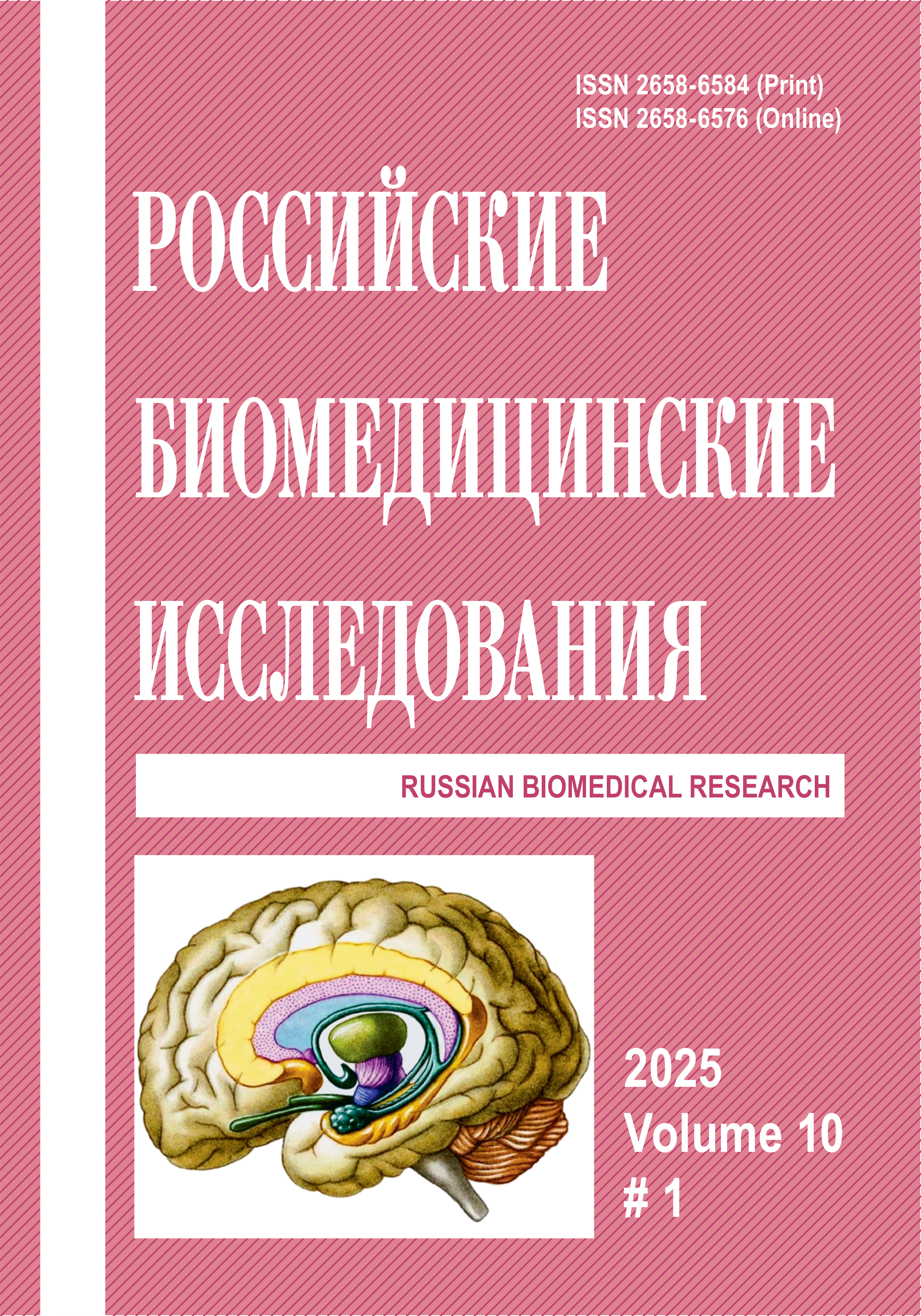MORPHOFUNCTIONAL CHARACTERISTICS OF THE GLANDULAR EPITHELIUM OF THE ORAL MUCOSA DURING CYTOSTATIC THERAPY
Abstract
Introduction. Cytostatic drugs used in oncological practice have a systemic effect on the body, including on the mucous membranes of the gastrointestinal tract, the side effects of which are stomatitis and mucositis, which complicate treatment. Objective — experimental study of the damaging effect of cytostatic drugs on the glandular epithelium of the oral mucosa and assessment of the reversibility of these changes. Materials and methods. The epithelium of the minor salivary glands of the tongue was studied on 20 mature white outbred mice after intraperitoneal administration of the cytostatic drug cyclophosphamide at a dose of 400 mg/kg body weight for 5 days. Animals in the control group (20 mice) were injected with isotonic sodium chloride solution at the same frequency. The material was obtained 24 hours and 20 days after the last injection of the drug. Histological and histochemical methods were used. Histochemical studies revealed the activity of the enzyme succinate dehydrogenase in the epithelial cells of the secretory portions of the minor salivary glands, the content of total proteins in serocytes, and the content of glycoproteins and glucosaminoglycans in mucocytes. Results. Exposure to cyclophosphamide led to a decrease in the activity of cyclophosphamide in serocytes and mucocytes, a decrease in the concentration of proteins in serocytes, and inhibition of the synthesis of glycoproteins and glucosaminoglycans in mucocytes. The changes were reversible. Conclusions. Cytostatic therapy causes damage to the glandular epithelium of the oral mucosa, which is expressed in the suppression of metabolic and synthetic processes. Serocytes are more sensitive to cytotoxic action than mucocytes. There was a high degree of regeneration of the glandular epithelium of the oral mucosa after the withdrawal of the cytostatic drug.
References
Bertholee1 D., Maring1 J.G., van Kuilenburg A. B. P. Genotypes Affecting the Pharmacokinetics of Anticancer Drugs. Clin Pharmacokinet. 2017;56:317–337. DOI: 10.1007/s40262-016-0450-z.
Ma M.K.M., Yung S., Chan T.M. mTOR Inhibition and Kidney Diseases. Transplantation. 2018;102(2S):S32–S40. DOI: 10.1097/TP.0000000000001729.
Shetty S., Maruthi M., Dhara V. et al. Oral mucositis: current knowledge and future directions. Dis Mon. 2022;68(5):101300. DOI: 10.1016/j.disamonth.2021.101300.
Gupta N., Quah S.Y., Yeo J.F., Ferreira J., Tan K.S., Hong C.H.L. Role of oral flora in chemotherapy-induced oral mucositis in vivo. Archives of Oral Biology. 2019;101:51–56. DOI: 10.1016/j.archoralbio.2019.03.008.
Oronsky B., Goyal S., Kim M.M., Cabrales P., Lybeck M., Caroen S., Oronsky N., Burbano E., Carter C., Oronsky A. A Review of Clinical Radioprotection and Chemoprotection for Oral Mucositis. Translational Oncology. 2018;11(3):771–778. DOI: 10.1016/j.tranon.2018.03.014.
Быков В.Л. Гистология и эмбриональное развитие органов полости рта человека. М.: ГЭОТАР-Медиа; 2014.
Jensen S.B., Vissink A., Limesand K.H., Reyland M.E. Salivary gland hypofunction and xerostomia in head and neck radiation patients. JNCI Мonographs. 2019;2019(53):95–106. DOI: 10.1093/jncimonographs/lgz016.
Galvao-Moreira L.V., Santana T., Nogueira da Cruz M. A closer look at strategies for preserving salivary gland function after radiotherapy in the head and neck region. Oral Oncol. 2016;60:134–141. DOI: 10.1016/j.oraloncology.2016.07.009.
Леонтьева И.В., Павлова Т.В., Кулаева В.В., Исеева Е.А., Затолокина М.А., Каплин А.Н., Леонтьева А.А. Реакция слизистой оболочки полости рта на повреждение и её регенерация в условиях цитостатической терапии. Вестник Волгоградского государственного медицинского университета. 2023;20(4):99–103. DOI: 10.19163/1994-9480-2023-20-4-99-103.
Copyright (c) 2025 Russian Biomedical Research

This work is licensed under a Creative Commons Attribution 4.0 International License.



